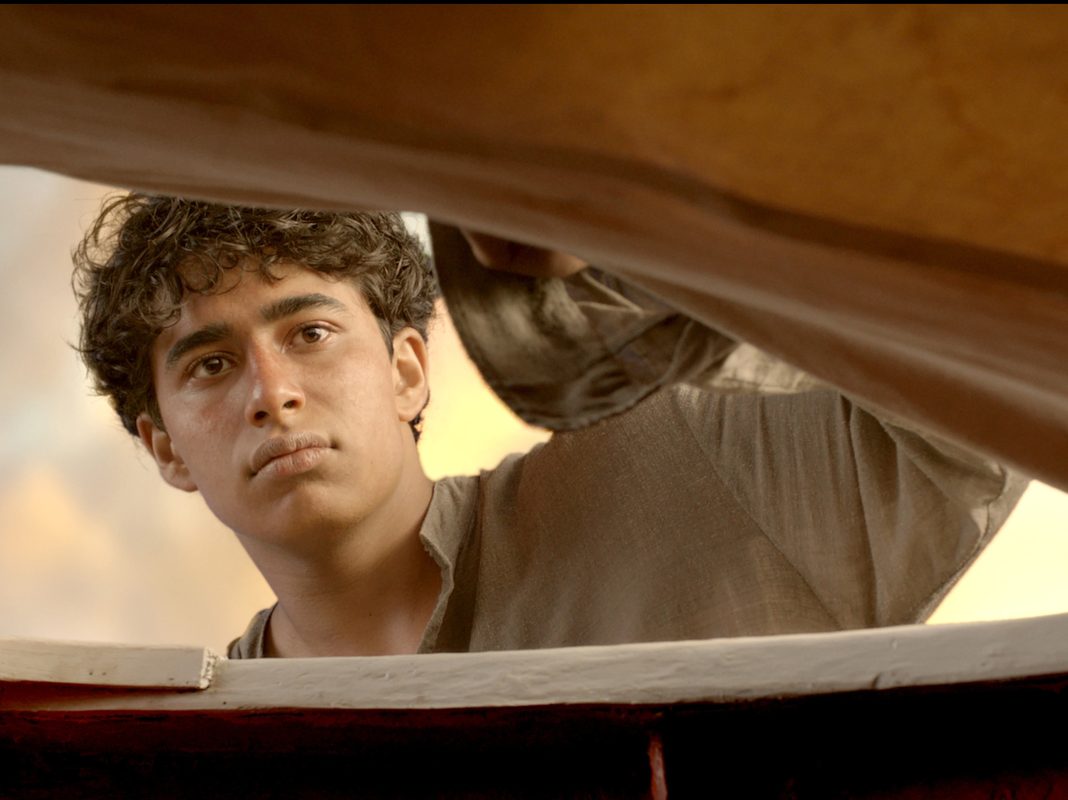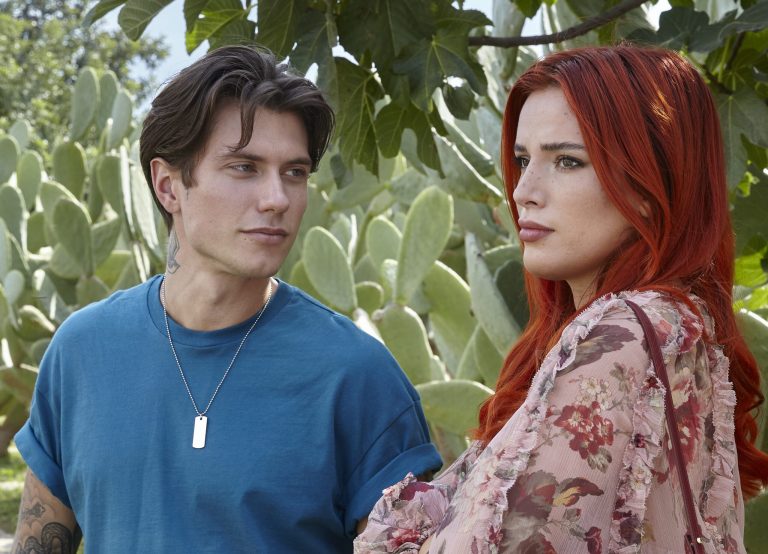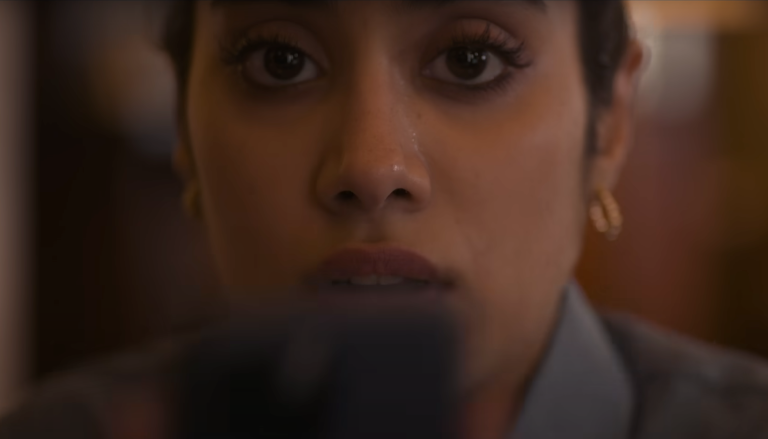Ang Lee’s “Life of Pi” embeds itself in the soul like few other films. A decade ago, at the age of 14, I encountered this cinematic marvel with the limitless curiosity of an animal lover and a mind refreshingly unburdened by critical foresight. I had a simplistic understanding: a boy, a tiger, an ocean – it must be a heartwarming story of an unlikely friendship. The film, however, defied all expectations.
At 26, looking back at Pi’s harrowing odyssey across the Pacific is more than just a re-watch; it’s a captivating exchange between my adult self, wrestling with deep complexities, and the amazed teenager who first met its unfiltered emotional force. What transpired, both at that time and in the present, was anything but a typical animal adventure; it was an expedition into the unforeseen abysses of survival, belief, and the intense, inescapable bond that arose amidst the unfeeling ocean.
The Unlikely Anchor: Richard Parker and the Flames of Survival
The idea of a Bengal tiger as a solitary companion on a lifeboat is nightmarish, yet Richard Parker became Pi’s essential anchor and purpose. During my teenage years, I was entranced by the boldness of their coexistence in their shared gaze. I can now see beyond the literal meaning. Richard Parker’s demeanor, characterized as “no-nonsense,” went beyond just feline temperament; it was the sharp, instinctual reality check that prevented Pi from yielding to despair and insanity. This magnificent, fiery-orange creature, its fur resembling lava amid the infinite blue, was more than just a character; in a deep, symbolic sense as he embodied Pi’s will to live.
Their daily battle—the grueling training, the demarcation of territory, the tacit agreement—turned into a testament to adaptability, a symbiotic dance of desperation. The omnipresent orange that characterizes Richard Parker, the life raft’s tarpaulin, and even Pi’s life jacket transcends mere color. It becomes a beacon of hope, radiating a sacred color linked to courage, suggesting that even amidst the harshest struggle for survival, there is a transformative, nearly divine resilience at work. This fearsome ally with orange flanks was essential to Pi’s survival, even as it inspired dread.
The Grand Stage: Water, the Ocean, and the Dual Nature of Existence
Their joint life developed in the most magnificent and ruthless arena: the ocean. This limitless azure expanse, a stage for awe-inspiring magnificence and fearsome tempests alike, was not just a backdrop; it was a character unto itself, an unyielding instructor. At the age of 14, the immensity was just too much to take in. Today, I see its deep duality: the waves that endangered them also sustained their desperate co-existence, providing sustenance through marine life.
The instances of “marine animal watching”—a wonderfully poetic expression—underscored the ocean’s complex equilibrium: it provided an abundance of life while serving as a ceaseless, unfeeling reminder of how near death lay, reflecting the delicate balance of their own survival. From tranquil, mirror-like waters reflecting the sky to glowing depths that sparkled with ethereal beauty, the ocean represented both the divine and the fearsome, prompting Pi to grapple with essential questions about his position in a vast, often uncaring universe.
The Deceptive Respite: The Mysterious Algae Island
Then appeared the mysterious Algae Island, a transient emerald green vision amidst the infinite blue. In my teenage years, it seemed like a magical and impossible break, a sudden paradise. It’s true, haunting symbolism now casts a chilling shadow. This green sanctuary, which at night unveils its true nature as a perilous, flesh-eating beast, embodies the most alluring of illusory hopes. What finally devours is the beguiling assurance of a simple exit: a gradual capitulation to a soothing yet treacherous demise.
When human teeth are found in its lotus flowers, it becomes a disturbing symbol of the psychological abyss—a descent into the depths of a mind stretched to its limits, where sanity and a darker kind of oblivion intertwine. Despite the initial comfort of this deceptive paradise, Pi’s ultimate decision to leave it behind serves as a powerful testament to his steadfast determination to return to genuine reality and choose the difficult path of survival over a living death.
The Ultimate Truth: The Power of Storytelling and Faith
The most profound layer of “Life of Pi,” which truly came alive during my adult re-watch, lies in its audacious exploration of truth, storytelling, and faith—not just in the symbols themselves but in their overarching purpose. Pi’s ordeal culminates not in a straightforward rescue, but in an encounter with pragmatic Japanese investigators who are demanding a “believable” account. As a result, Pi presents two narratives: one involving the animals and a chilling, human-focused counterpart that implies cannibalism and unspeakable violence.
“Life of Pi” sets itself apart through this crucial decision. In a well-known instance, Pi asks, “Which story do you prefer?” and concludes with, “And so it goes with God.” This involves more than just the choice between a fantastical tale and a grim reality; it concerns recognizing the intrinsic human need for meaning and for a narrative that rises above the everyday and the dreadful. The orange, the ocean, Richard Parker—these symbols converge into the “better story,” a construct that enabled Pi to grapple with unspeakable trauma and emerge alive not only physically but also spiritually.
Through this dual narrative, we, the audience, are thrust into the same philosophical quandary, becoming active participants in the film’s central message: that sometimes, the stories we opt to believe—those that render life bearable and beautiful—embody a truth far more important than mere facts.
Concluding Thoughts: The Enduring Echo of Pi’s Tale
Returning to “Life of Pi” at 26 has proven to be much more than just a re-watch; it has been a journey of deep rediscovery. As a 14-year-old, I was filled with wonder; now that feeling has developed into a deeper appreciation of the film’s complex web of symbolism. What was once seen as vibrant set pieces—the ubiquitous orange, the infinite ocean, the eerie Algae Island, or even the importance of Pi’s name, Piscine Molitor Patel, which was cleverly shortened to the boundless π—now emerge as crucial elements in a potent allegory.
My comprehension of Ang Lee’s artistry in intertwining the delicacy of survival with the steadfast human reliance on faith and the redemptive potential of narrative has been enhanced by this adult lens. “Life of Pi” exemplifies the “cinematic enlightenment” you advocate for; it is a film that transcends mere storytelling to become a narrative that inspires belief — not only in God, but also in the limitless potential of human creativity to discern significance, even amidst vast emptiness. In the end, it invites us to select the narrative that sustains our spirit, reminding us that at times, the most remarkable truths are hidden just below the surface of our assumptions.




![My Name is Andrea [2022]: ‘Tribeca’ Review- An Eye-Opening Take on How Swiftly Castles of Glass can Shatter](https://79468c92.delivery.rocketcdn.me/wp-content/uploads/2022/06/My-Name-is-Andrea-Tribeca-Review-1-768x418.png)



